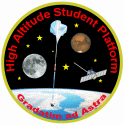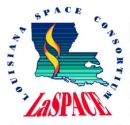



Payload 12 Information
Payload Flight Number:
Institution:
Payload Title:
Second Look Intelligent Calibration Cameras System (SLICC)
Student Leader:
Faculty Advisor:
Payload class:
LARGE
Payload ID Number:
12
Mass:
Current:
Serial Downlink:
Analog Downlink:
Serial Commands:
Discrete Commands:
Payload Specification & Integration Plan
Due:
Delivered:
Payload Integration Certification
Scheduled:
Actual:
Flight Operation Plan
Due:
Delivered:
Final Flight / Science Report
Due:
Delivered:
Abstract:
The Second Look Intelligent Calibration Cameras System (SLICC) is designed to compare ccd and cmos imagers in a near space environment for use in attitude determination of spacecraft. The camera systems will be integrated and tested by a student team from the Space Engineering Institute of Texas A&M University led by a graduate student, Ron Denton, who developed the initial single camera system which flew in 2008. The development of smaller and lighter ccd and cmos imagers for use as "star trackers" on spacecraft is continuing. There are many differences in the systems and side by side comparisons of these technologies in "near space" would be helpful in understanding the practical strengths and weaknesses of each technology. We propose to supply a package which will implement two cameras pointed at dark sky which is clear of the balloon's envelope and the horizon with control computers and telemetry (thus needing to be positioned with a relatively unobstructed view upward and outward from the top of the HASP package). Each camera would take images using experimental software which can perform image analysis and optimization and conversion of star field information to Quaternions for use in attitude estimation. An Az/El mount will allow the cameras to be aimed away from the sun and toward parts of the sky containing sparse star populations to maximally test various "star tracker" attitude determination techniques. Bi-directional telemetry will allow switching software applications and image processing parameter results to be conducted by the ground team.
Science Report:
Monthly Briefings:
|